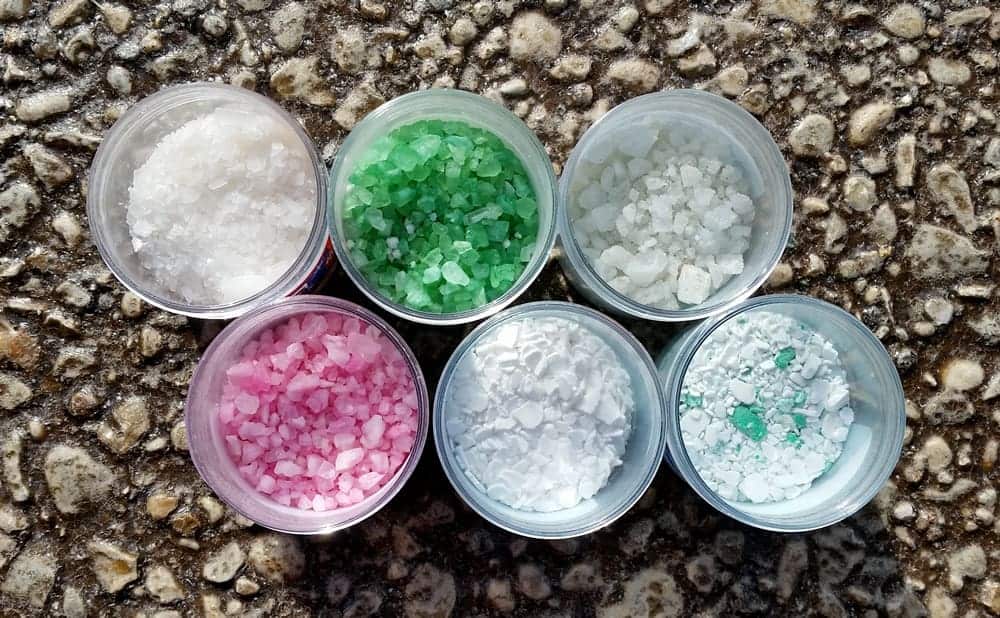Deicing chemicals are any chemical used to remove ice… but they aren’t as bad as you think. Rock salt is a “deicing chemical” and you likely use rock salt all the time, you just call it table salt. So why is it called a “chemical?”
Well, Wikipedia says “a chemical substance is a form of matter having constant chemical composition and characteristic properties.” Regular old table salt is therefore a “chemical.” So, when you hear people using “deicing chemicals” they are usually applying a mixture primarily of glycol for planes or a type of salt for roads and sidewalks .
A type of salt for sidewalks? You mean there is more? Yes, there are several different types of salts used for deicing. The most common is rock salt or sodium chloride. Other common salts used for deicing are calcium chloride, magnesium chloride, and potassium chloride.
Are Only Salts Used for Deicing?
No, you can find non-salt chemicals used for de-icing too. For example, for deicing sidewalks and streets, you may see CMA, Sodium Acetate, and other products used. When it comes to deicing airplanes, usually the mix is made primarily of propylene glycol or ethylene glycol, which are environmentally friendly chemicals that are also used in anti-freezes.
How do Deicers Work?
Deicers just change the melting temperature of water. What we are doing is keeping the water as a liquid at a lower temperature preventing it from being or becoming dangerous ice. Just about anything in water can lower the freezing temperature to something lower than 32°F, but certain chemicals are more cost effective to do the job.
It is also true that certain chemicals are more appropriate for certain applications. You obviously don’t want to dump a lot of salt on an airplane to remove snow and ice from wings. Your local restaurant will also continue to use alcohol, and not salt, to make their tasty, freezing cold drink or spiked slush. Rock salt is the primary chemical used on roads because it is easy to spread over large areas and is about the cheapest product available for eliminating ice.
Do all Deicing Chemicals Perform the Same?
There is about a 40°F difference in lowest working temperature between rock salt (15°F) and calcium chloride (-25°F), which is a huge gap when it comes to winter temperatures. When you get to temperatures below -25°F, there are not any chemicals that are really cost effective as a deicing chemical for roads and sidewalks.
Airplane deicers can go to even colder temperatures. For example, Dow UCAR PG ADF Aqueous Solutions properly prepared can melt ice to about -63°F (though because of required buffers, it doesn’t actually get used that low).
So that, in a nutshell, are what we call deicing chemicals.

